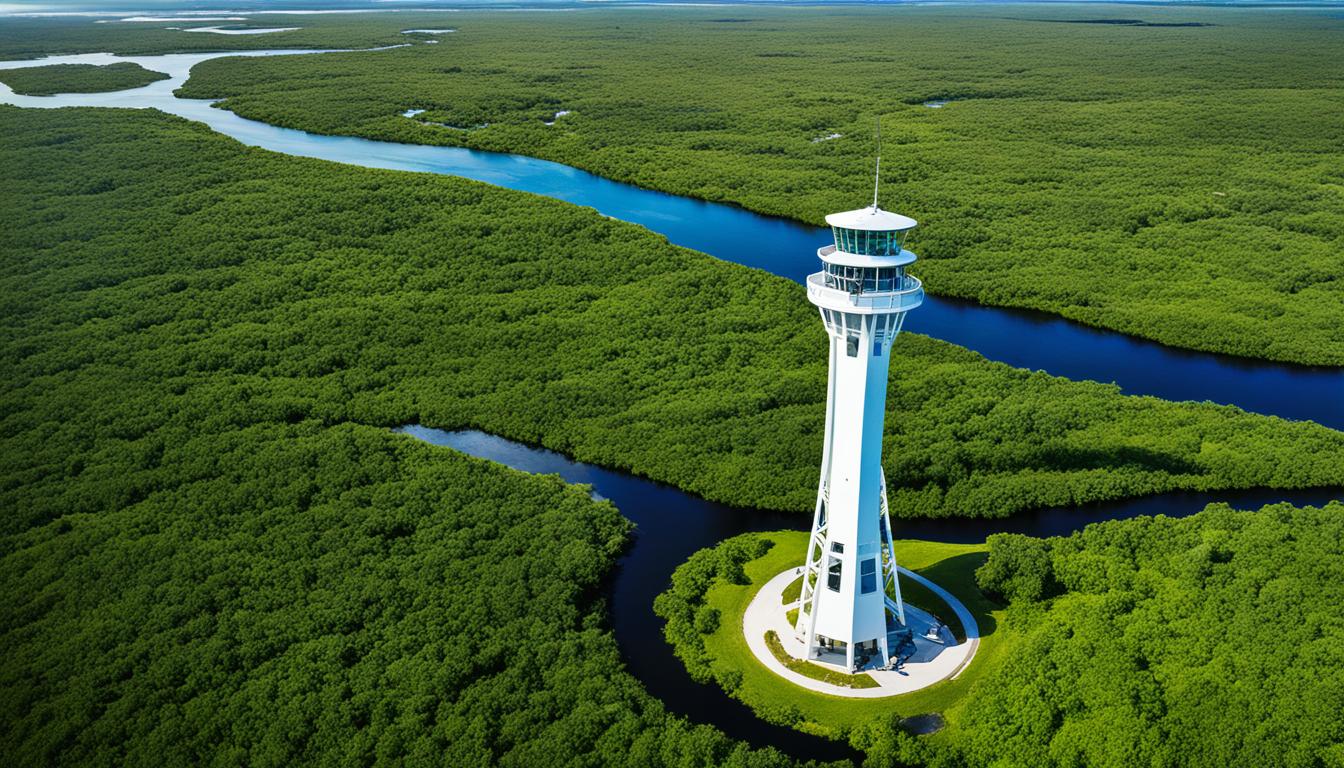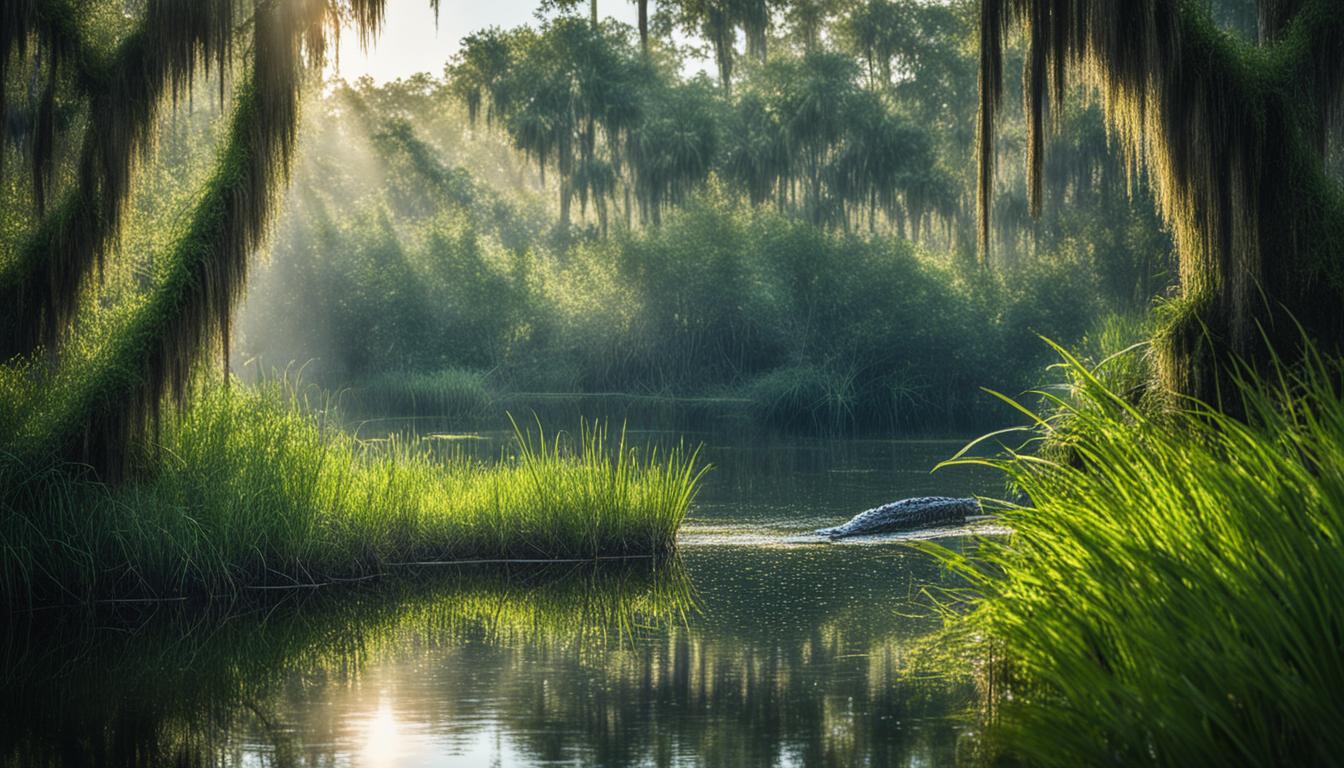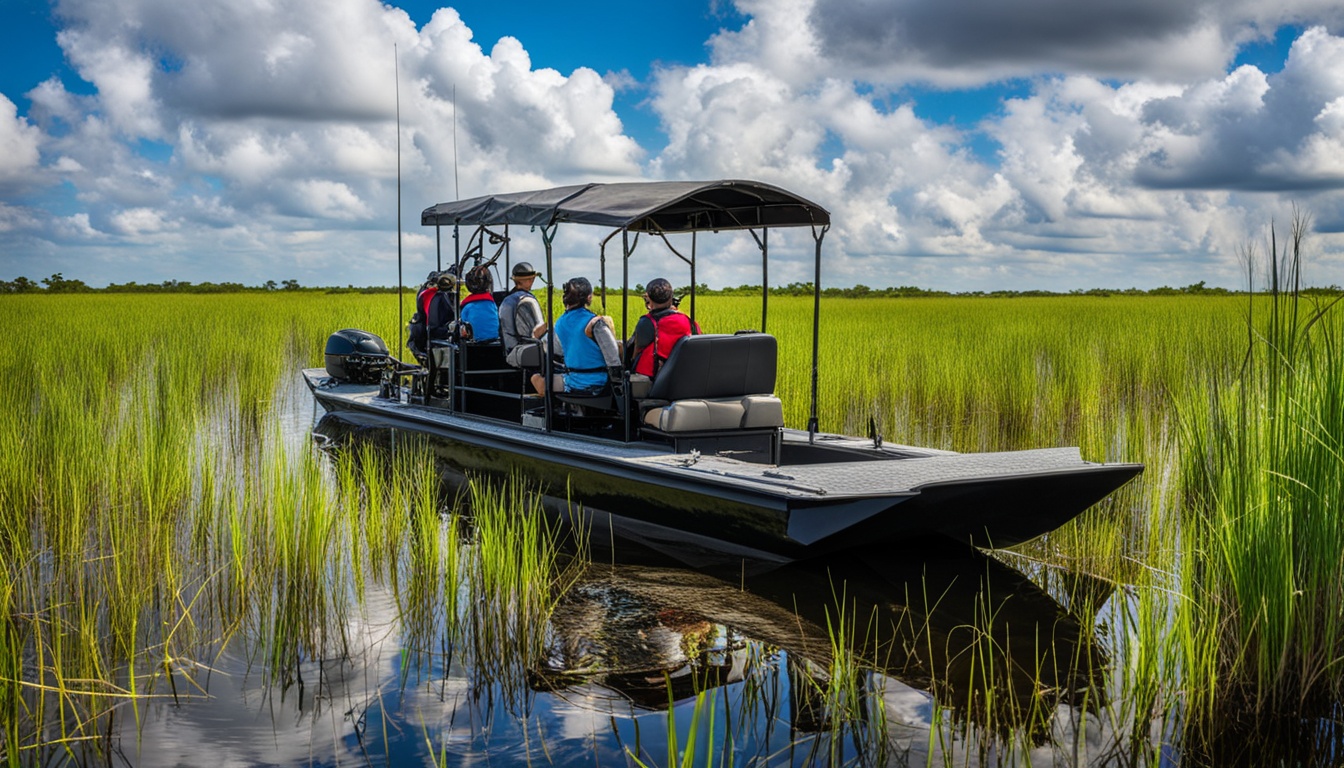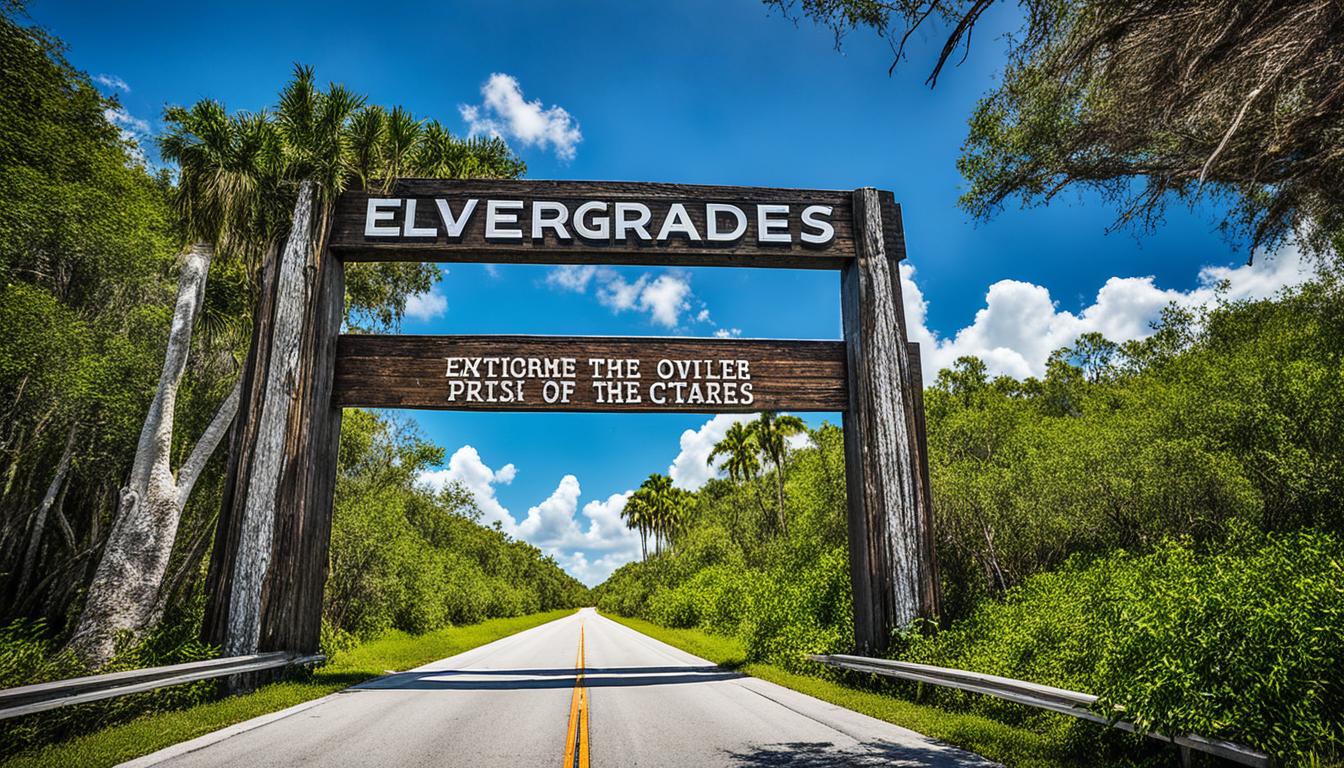Welcome!
Everglades National Park, Florida: Best Things to Do - Top Picks
Ever wondered about exploring the largest subtropical wetland in North America? Welcome to Everglades National Park, a vast wonder full of adventure. It spans over 1.5 million acres, housing a wide variety of plants and animals, including rare and endangered ones.
Here, you can see alligators and crocodiles together and watch vibrant birds fly above. The Everglades is perfect for nature lovers, outdoor fans, and those who care about the environment. So, what are the top activities in this amazing park? Let's find out what will amaze and inspire you.
Key Takeaways
- Everglades National Park is the largest remaining subtropical wetland ecosystem in North America, spanning over 1.5 million acres.
- The park is home to a diverse array of tropical and temperate plant and animal life, including some rare and endangered species.
- Everglades National Park is the only place in the world where both alligators and crocodiles coexist.
- Conservation efforts have been ongoing to preserve this unique and fragile environment, which has seen a 50% reduction in overall ecosystem size due to drainage for agriculture and urban development.
- Visitors to the Everglades can enjoy a range of outdoor activities, from airboat tours and hiking trails to canoeing, kayaking, and birdwatching.
Discover the Unique Everglades Ecosystem
Everglades National Park is a true natural wonder. It's home to a wide variety of tropical and temperate plants and animals. The largest mangrove ecosystem in the western hemisphere is here. It also has the most significant continuous stand of sawgrass prairies in North America.
This makes it a key habitat for many rare and endangered species.
Tropical and Temperate Plants and Animals
Visitors will see a vibrant tapestry of lush vegetation. This includes towering palm and pine trees, and colorful bromeliads and cacti. The park is a birdwatcher's dream, with over 300 species of rare birds.
Among them is the iconic roseate spoonbill, flitting through the foliage.
The Everglades is also a sanctuary for animals like bears, whitetail deer, and the elusive Florida panther. It's the only place in the world where alligators and crocodiles live together.
Preservation Efforts and History
The Everglades has faced big challenges, with much of it drained for development. This led to a 50% reduction in the ecosystem. But, conservation efforts have been going on since 1934.
Today, the Everglades National Park spans 1.5 million square acres. It's a vast and diverse landscape that continues to amaze and inspire visitors from all over the world.
Best Places to Spot Wildlife
Everglades National Park is a top spot for seeing wildlife. You can see alligators, crocodiles, manatees, and many birds in their natural settings. It's a great place to watch these amazing animals.
Alligators, Crocodiles, and Manatees
Look for alligators along the Scenic Loop Road off US 41 or at the Oasis Visitor Center. For crocodiles, head to the Flamingo marina. To see manatees, go behind the Flamingo Visitor Center.
Birdwatching Hotspots
- Shark Valley entrance road (before 8:30 am)
- Paurotis Pond, where Wood Storks are nesting
- The Anhinga Trail at Royal Palm
The Everglades is famous for its bird diversity. These spots are perfect for birdwatchers to see many species.
| Location | Wildlife to Spot |
|---|---|
| Scenic Loop Road (US 41) | Alligators |
| Flamingo Marina | American Crocodiles |
| Flamingo Visitor Center | Manatees |
| Shark Valley Entrance | Diverse Birdlife |
| Paurotis Pond | Wood Storks |
| Anhinga Trail (Royal Palm) | Variety of Bird Species |
Remember to bring bug spray and a good screen tent. The Everglades has lots of mosquitoes.
Explore Big Cypress National Preserve
Right next to Everglades National Park is Big Cypress National Preserve, a 720,000-acre wilderness area since 1974. It's mostly made up of the Big Cypress Swamp ecosystem. This gives visitors a special and interesting experience.
Big Cypress is known for its many alligators. You can see these big reptiles along the Scenic Loop Road off US 41. Here, you can watch them from a safe distance. The park also has free ranger-guided tours and activities to teach you about the wildlife and the ecosystem.
The Turner River is a great place for paddling. It lets you go through mangrove tunnels and see alligators, birds, and other animals. The Loop Road, a 24-mile scenic drive, is also a must-do for visitors.
Looking for a peaceful place or a chance to see the unique Floridian wilderness? Big Cypress National Preserve is a hidden gem. It's a must-see on your Everglades trip.
Venture into Shark Valley
Explore the Shark Valley area in Everglades National Park, a top spot for wildlife lovers. As you get closer, you'll see a channel full of birds and alligators. It's perfect for birdwatching in the early morning.
Tram Tours and Bike Rentals
Shark Valley offers two fun ways to see the area. You can take a guided tram tour on the 15-mile paved trail. This leads to an observation tower with stunning views of the wetlands. Or, rent a bike and ride the trail yourself to really take in the Everglades' beauty.
The Shark Valley Visitor Center is open seasonally. It's open from 8:30 a.m. to 5:00 p.m. from mid-December to mid-April. And from 9:00 a.m. to 4:30 p.m. from mid-April to mid-December. Make sure to book your tram tour early, as they often sell out quickly.
While in Shark Valley, look for the many animals that live here. You might see alligators or different birds flying above. The Everglades is a great place to see nature in action.

"Shark Valley is a must-visit destination for anyone exploring the Everglades. The tram tours and bike rentals provide an unforgettable way to immerse yourself in this incredible landscape."
Flamingo Area Adventures
In the southeastern part of Everglades National Park, the Flamingo area is a hub for adventure. It lets you explore unique ecosystems with hiking trails and boardwalks. Or, you can enjoy a calm water journey by renting canoes and kayaks.
Hiking Trails and Boardwalks
Along the main park road, you'll find many boardwalks and trails. These paths take you through the Everglades' varied habitats. You'll see lush green forests filled with birds and other wildlife.
Popular trails like the Royal Palm area and the Mahogany Hammock offer special views of the park's beauty.
Water Activities: Kayaking and Canoeing
For a deeper dive, try the park's waterways. Rent canoes and kayaks at the Flamingo marina. Then, paddle through the mangrove forests and the "River of Grass" unique to this area.
This peaceful way to see the park lets you get close to diverse wildlife. You might see wading birds, manatees, and alligators.
The Everglades National Park is vast and varied, with the Flamingo area as a key entry point to its wonders. Whether you like exploring on land or by water, the Flamingo area offers memorable experiences. These will deepen your appreciation for this incredible ecosystem.
Everglades National Park, Florida: Best Things to Do - Top Picks
Everglades National Park is a treasure trove of activities and experiences. It's the largest subtropical wilderness in the US, covering 1.5 million acres. This park is a true natural wonder.
One great way to see the Everglades is by hiking its trails and boardwalks. You might spot alligators, crocodiles, and over 300 rare bird species. The Anhinga Trail, a 0.8-mile loop, is perfect for wheelchair users and wildlife watching.
For a closer look, rent a canoe or kayak. Paddle through the mangrove forests and "River of Grass." You can see the Everglades' plants and animals up close, including manatees.
Airboat tours let you see parts of the park you can't reach by land or water. You'll glide over the shallow waters and see the Everglades from a new angle.
Ranger-led tours and programs teach you about the park's history and why it's so important to protect it. These tours are a great way to learn more about the Everglades.
No matter what you choose to do - hiking, paddling, or taking an airboat tour - Everglades National Park is unforgettable. It's a chance to explore one of the world's most unique and vital wetland systems.

Ranger-Guided Tours and Activities
Everglades National Park is full of learning opportunities with its ranger-led tours and activities. Dive into the park's unique world and learn about its history and conservation efforts with expert rangers.
Join a walk on trails like the famous Anhinga Trail to discover the park's plants and animals. Learn the secrets of the Everglades at talks at the Shark Valley and Ernest F. Coe Visitor Centers. Kids can also join the Junior Ranger program, doing fun activities and earning a badge to love the Everglades even more.
| Ranger-Guided Tour | Description |
|---|---|
| Anhinga Trail | A 0.8-mile easy walk in the Royal Palm Area known for its abundant wildlife sightings, including alligators, herons, and turtles. |
| Shark Valley Tram Tour | A 15-mile circular tram tour that departs hourly from the Shark Valley Visitor Center, providing opportunities to spot a variety of animals. |
| Junior Ranger Program | An engaging educational program where children can complete activities in a booklet and earn a badge, fostering a connection to the park's conservation efforts. |
These ranger-led tours are a great way to see the beauty of Everglades National Park. You can learn about the ecosystem, history, or conservation efforts. The park rangers are ready to take you on an amazing journey.
"The Everglades is a test. If we pass it, we may get to keep the planet." - Marjory Stoneman Douglas, author and conservationist
Airboat Tours and Safaris
Everglades National Park offers a unique experience with airboat tours and safaris. These tours let you explore the vast wetlands and see diverse wildlife. Even though airboats can't go inside the park, some authorized operators take tours just outside.
Down South Airboat Tours is one such company. They let visitors see the marshlands and wetlands up close. You'll get to see wildlife and learn about conservation. The tours are led by captains who know the trails and care for the Everglades.
| Tour Name | Duration | Price |
|---|---|---|
| The Everglades Airboat Tour (Fort Lauderdale) | 1 hour | - |
| Western Everglades Adventure Tour (Fort Myers) | - | from $100 |
| Florida Everglades Private Night Airboat Ride Tour | - | from $179.69 |
| Florida Everglades Airboat Adventure & Wildlife Encounter | 40 minutes | - |
| 3-4 Hours Everglades Tour from Miami | 3-4 hours | from $69.79 |
| 90-Minute Everglades Airboat Tour (Central Florida) | 90 minutes | from $88.99 |
| Everglades Day Safari from Ft Lauderdale | full-day | from $199 |
| Everglades Excursion from Miami | - | from $69 |
| Everglades Holiday Park Airboat Ride | 45 minutes | from $59 |
| Private 2-Hour Airboat Tour of Miami Everglades | 2 hours | - |
These tours and safaris bring you close to the Everglades' unique ecosystem. You might see alligators, crocodiles, and many birds. They teach about conservation and how to visit sustainably, helping to protect this natural area.

"The Everglades is a test. If we pass it, we may get to keep the planet." - Marjory Stoneman Douglas, author and environmental activist
Accommodations and Camping
Everglades National Park has many places to stay for all budgets. You can choose from hotels for comfort or camping for a closer nature experience. There's something for everyone when planning your trip to this amazing place.
Nearby Hotels and Resorts
For a fancy stay, check out hotels and resorts near Everglades National Park. In Everglades City, you can find the Port of the Islands Resort for a mid-range stay. Or pick the Everglades Adventures Hotel for something more budget-friendly.
If you want to visit Miami, it's just a 1-hour drive away. You'll find luxury at The Setai, Miami Beach, mid-range at Moderno Residences, or budget-friendly at Miami Beach Rooms B&B.
Campgrounds Inside and Outside the Park
For a closer nature experience, try camping in or around Everglades National Park. The Long Pine Key Campground inside the park is peaceful, with tall pine trees and activities led by rangers in winter. RVs up to 35 feet can camp here too.
- Quiet hours at campgrounds are from 10 pm to 6 am, with generator usage permitted only from 8 am to 8 pm.
- Campfires are allowed only in grills and must not be left unattended, while hammocks are prohibited from being attached to trees.
- Each campsite can accommodate up to 6 people and 2 vehicles, with a maximum camping stay of 14 days.
- Swimming in lakes or ponds within the park is not permitted.
Outside the park, Key Largo is great for water activities like visiting the world's largest artificial reef. You can stay at the Dolphin Point Villas for luxury, Anchorage Resort for mid-range, or Tiny House RV for budget-friendly options.
Everglades National Park and its areas offer many places to stay, no matter your budget or preference. Whether you want a fancy resort, a cozy hotel, or to camp in nature, your trip will be memorable.
Planning Your Visit
Planning a trip to Everglades National Park is key to enjoying it fully. With four main entrances and visitor centers, it's important to pick where you want to go. This vast wetland is full of wonders waiting to be explored.
The Everglades is easy to get around, thanks to many flat, paved trails. These are great for visitors with disabilities. Always check for updates on accessibility or closures before you go.
The best time to visit is from November to March, when it's dry. The weather is less humid, and there are fewer bugs. This makes your visit more comfortable and fun.
- Entrance fees: $35 per vehicle for a 7-day permit, $20 for pedestrians and cyclists
- Annual passes: $70 for Everglades Park Pass, $80 for America the Beautiful National Parks and Federal Recreation Lands Pass
- Discounts: $20 for seniors, free for U.S. citizens with disabilities
- Fishing licenses: $30 for nonresidents (7-day), $17 for Florida residents (annual)
Before you go, check the park's website or call the visitor centers for the latest on ranger-led activities and tours. Keep an eye out for any closures or disruptions. With some planning, you're set for an amazing adventure in the Everglades!

Responsible Tourism and Conservation
Everglades National Park is the largest subtropical wilderness in the U.S. It needs visitors to be careful and practice responsible tourism. This place is very delicate and needs our respect and care.
It's important to follow all the park's rules and guidelines. Keep to the marked trails, don't bother the wildlife, and throw away trash properly. These actions help protect the Everglades for the future.
Also, support activities that help protect the Everglades. Options like guided tours, canoeing, kayaking, and birdwatching let you learn and enjoy while being gentle with nature.
"By appreciating and respecting this national treasure, visitors can help ensure its continued conservation for future generations."
The Everglades is full of plants and animals, some of which are in danger. As a visitor, you can help protect this place. Make sure your visit doesn't harm the environment and leave it as you found it.
Your efforts in responsible tourism and conservation are crucial. Together, we can keep the Everglades safe for the future. Let's make sure it stays a special place for all to enjoy.
Conclusion
The Everglades National Park is a true natural treasure. It offers a unique chance to dive into a vast and diverse wetland ecosystem. Here, you'll find tropical and temperate plants and animals, including alligators and crocodiles living together. It's a must-see for nature lovers and outdoor fans.
By visiting responsibly and supporting conservation, you can help protect this delicate place. You can explore the park's wildlife, go on an airboat tour, or just enjoy the stunning views. The Everglades promises an unforgettable trip that highlights its unique beauty and importance.
When planning your trip to the Everglades National Park, remember to respect its delicate balance. Supporting conservation and sustainable practices helps protect the Everglades for the future. This way, you ensure this natural wonder stays a special place for all who want to connect with nature.
FAQ
What is the size and significance of Everglades National Park?
Everglades National Park is the largest subtropical wetland in North America, covering over 1.5 million acres. It's home to many tropical and temperate plants and animals, including rare and endangered ones. It's the only place where alligators and crocodiles live together.
When was Everglades National Park established and what is the history of the ecosystem?
Everglades National Park was made a national park in 1934 and opened in 1947. But the Everglades ecosystem is much bigger than the park. In the late 1800s to early 1900s, a lot of the wetlands were drained for farming and cities. This cut the ecosystem down by 50%.
Now, there are efforts to save this unique and delicate place.
What are some of the best places to spot wildlife in Everglades National Park?
You can see alligators along the Scenic Loop Road off US 41 or at the Oasis Visitor Center. Crocodiles are mostly found in the Flamingo marina area. Manatees are often seen right behind the Flamingo Visitor Center.
For birdwatching, try the Shark Valley entrance road, Paurotis Pond, or the Anhinga Trail at Royal Palm.
What are the top activities and experiences in the Big Cypress National Preserve?
The Midway campground in Big Cypress is great for seeing alligators, with many visible from the boardwalk at the Oasis Visitor Center. The park offers free tours and activities to learn about the wildlife and ecosystem.
What are the highlights of the Shark Valley area in Everglades National Park?
Shark Valley is perfect for wildlife watching, with birds and alligators in the water next to the entrance road. You can take a narrated tram tour along the 15-mile paved trail or rent bikes to explore on your own.
What can visitors experience in the Flamingo area of Everglades National Park?
The Flamingo area has hiking trails and boardwalks through different Everglades habitats. You can also rent canoes and kayaks at the Flamingo marina to explore the mangrove forests and "River of Grass" waterways.
What are the best ways to learn about the Everglades ecosystem and its conservation efforts?
Everglades National Park has ranger-led tours and activities like walks, talks at visitor centers, and a Junior Ranger program. These offer great ways to learn about the park's history, wildlife, and conservation efforts.
Are airboat tours allowed within Everglades National Park?
Airboat tours are not allowed in most of Everglades National Park. But, there are some authorized operators outside the park that offer these tours. These tours let visitors see the marshlands and wetlands up close, offering great wildlife viewing and learning about conservation.
What are the accommodation options for visitors to Everglades National Park?
Visitors can stay in hotels and resorts near Miami or Key Largo, or in hotels in Homestead or Florida City closer to the park. The park also has some RV sites and campgrounds, but these should be booked early.
When is the best time to visit Everglades National Park and how can visitors plan their trip?
The best time to visit is from November to March, when it's less humid and there are fewer bugs. Check the park's entrances and visitor centers to plan your trip. Make sure to look for any updates on access or closures before you go.
How can visitors engage in responsible tourism and support conservation efforts in Everglades National Park?
Visitors can help protect the Everglades by following park rules, staying on trails, and not bothering the wildlife. Choosing eco-friendly activities like guided tours, canoeing, and birdwatching helps protect the delicate ecosystem.
Related Posts
By accepting you will be accessing a service provided by a third-party external to https://travel.com/